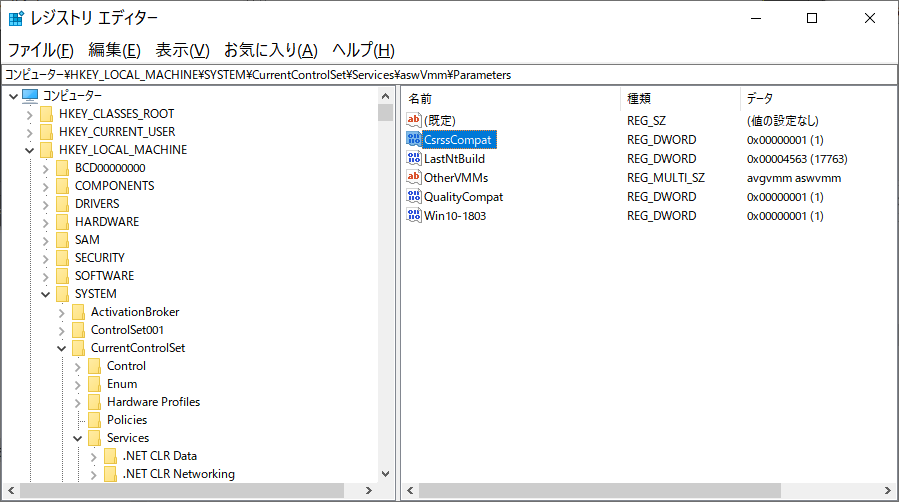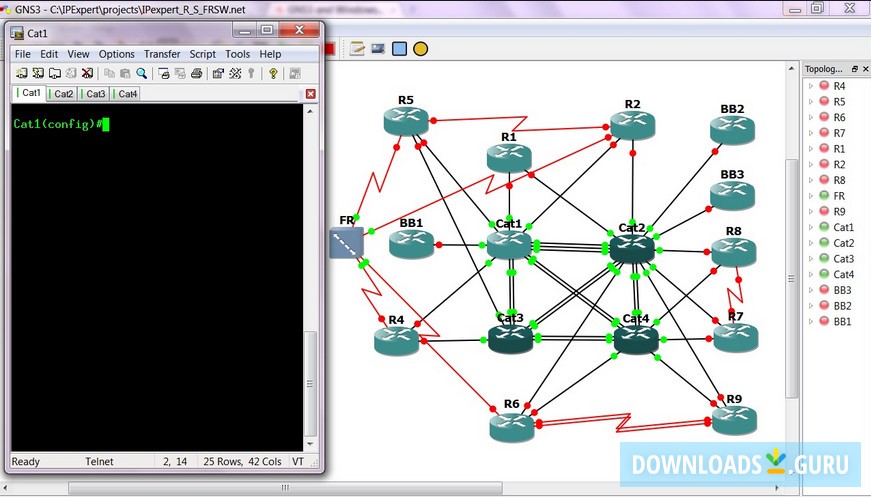

GNS3 local server checks whether a GNS3-VM Server virtual machine is present. GNS3 client connects to GNS3 local server. Select the first option "Run appliances in a virtual machine" and click Next.Įven though you want to use a virtual machine to run virtual devices, still you need to configure the GNS3 local server. Now, open the GNS3 client and start the Setup Wizard again. VMware Workstation lists the imported machine in the left pane. Importing process may take a few minutes. Select the folder on the partition that has at least 20GB of free disk space. Set the name "GNS3 VM" for the virtual machine and select the destination folder where you want to store the virtual machine. VMware Workstation opens the file in the Import Virtual Machine wizard. Now start the VMware workstation and click File and click Open Select the GNS3 server file and right-click and click the Extract all option.

GNS3 AVAST SOFTWARE
The installation and configuration process for all virtualization software is the same.ĭownload the pre-built virtual machine for your virtualization software from the following webpage.Īfter downloading the virtual machine, open the folder that contains the downloaded file. You can use any virtualization software that you prefer. In this tutorial, we will use VMware Workstation.
GNS3 AVAST PC
Microsoft Virtual PC and VirtualBox are free. GNS3 provides pre-built customized GNS3 server virtual machines for VMware, VirtualBox, and Microsoft Virtual PC.
GNS3 AVAST DOWNLOAD
To use this setup, you need to download GNS3 server virtual machine. If you want to use GNS3 to practice CCNA/CCNP exam topics, this setup is the best. This setup supports only limited devices such as legacy IOS images, VPCS, built-in-hub, switches, etc. Now, you can use GNS3 to create and test network topologies. On the last screen, it displays the summary of configuration settings it used to start the local GNS3 server and connect the GNS3 client to the GNS3 server. If it shows the message "Connection to the local GNS3 server has been successful", it verifies that the local GNS3 server has been set up successfully. On the next screen, it displays the result. The wizard starts the GNS3 server and connects the GNS3 client to the GNS3 server on the selected IP address and port number. You can use any available TCP port.īy default, the wizard automatically configures these values.

The local GNS3 server accepts connections from GNS3 clients on this port. It provides the most error-free environment to the applications that run a server process on the local system. This IP address belongs to the loopback interface. Although you can use any available IP address from the drop-down, you should use the IP address 127.0.0.1. The wizard offers many IP addresses to choose from in the drop-down. The local GNS3 server runs on this IP address. You can use the Browse option to select it. The installation process installs this component in the installation directory of the GNS3 client.
GNS3 AVAST INSTALL
When you install the GNS3 client, the installation process automatically installs the GNS3 server component. On the next screen, you need to configure three options: Server Path, Host binding, and Port. On the first screen of the Setup Wizard select the second option "Run appliances on my local computer" and click Next. Click the Help menu and click the Setup Wizard option. You can also start the Setup Wizard anytime from the Help menu. The Setup Wizard allows you to configure the GNS3 server. When the GNS3 client starts the first time, it automatically starts the Setup Wizard. To configure the local system as a GNS3 server, start the GNS3 client. The GNS3 client includes all necessary components to use the local system as the GNS3 server. To use this option, you don’t need any additional setup or configuration on the local system. Installing and configuring the GNS3 server on the local system without a virtual machine is the first and the easiest option.
GNS3 AVAST HOW TO
In this tutorial, we will discuss and learn how to install the GNS3 server on Windows using the first and second options. Since this setup is not required to practice CCNA/CCNP exam topics, we will discuss this setup in another tutorial separately. You do not need this setup to practice the CCNA/CCNP exam topics. This setup is the best if you want to use GNS3 to test live networks. The third option requires a remote server and a computer or laptop with bigger RAM, CPU, and hard disk.


 0 kommentar(er)
0 kommentar(er)
